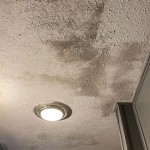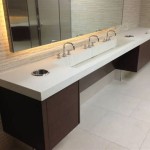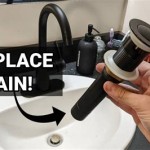How to Install a Bathroom Recessed Lighting System
Recessed lighting, also known as can lighting, offers a sleek and efficient way to illuminate your bathroom. Installing a recessed lighting system can enhance the ambiance, improve visual appeal, and provide adequate illumination for various bathroom activities. This guide will break down the steps involved in installing a recessed lighting system in your bathroom, ensuring a successful and safe installation.
1. Planning and Preparation
Before embarking on the installation process, careful planning and preparation are essential. This involves determining the number of lights, their placement, and the necessary materials. Start by selecting the appropriate recessed light fixtures, considering factors like size, shape, trim style, and brightness. Ensure the chosen fixtures are specifically designed for wet locations, as bathrooms have high humidity levels.
Next, determine the desired location of the recessed lights. Consider the placement of mirrors, vanities, and shower areas to ensure adequate illumination. Use a stud finder to locate the joists in your ceiling, as the recessed lights must be mounted to these structural supports. Factor in the depth of the fixture and the thickness of the ceiling material to ensure sufficient space for installation.
Once the placement is decided, gather the necessary tools and materials. These include a stud finder, a level, a drill with appropriate bits, a wire stripper, electrical tape, a screwdriver, a utility knife, safety glasses, and work gloves. Ensure you have the required electrical wiring and junction boxes for connecting the lights.
2. Cutting the Ceiling Opening
The first step in installing recessed lighting is to cut the ceiling opening. This requires precise measurement and careful cutting to ensure a smooth installation. Using a pencil, mark the location of the recessed light fixture on the ceiling, ensuring it aligns with the joist. Using a utility knife, carefully cut a circle around the marked area, ensuring it's slightly larger than the diameter of the fixture.
Once the circle is cut, carefully remove the cutout piece of drywall. Use a pry bar to gently lift the drywall, avoiding damage to the surrounding area. If the ceiling is made of plaster, use a drywall saw to cut a square opening and carefully chip away the excess plaster with a hammer and chisel.
3. Installing the Fixture Housing
With the ceiling opening prepared, install the housing for the recessed lighting fixture. The housing acts as a support for the light and provides a secure enclosure for the wiring. Insert the housing into the ceiling opening, ensuring it aligns with the joist. Use screws or nails to secure the housing to the joist, ensuring it sits flush with the ceiling.
If the housing is not pre-wired, connect the wires from the electrical box to the housing terminals. Use wire connectors or terminal blocks to secure the connections, ensuring they are tight and secure. Wrap the connections with electrical tape to prevent short circuits.
4. Connecting the Fixture and Testing
With the housing secured and the wiring connected, install the recessed lighting fixture. Carefully align the fixture with the housing and gently push it into place. Ensure the fixture is securely attached to the housing.
Before turning on the power, test the connection. Turn off the power to the circuit and use a voltage tester to ensure the wires are not live. Once you are certain the wires are de-energized, connect the fixture wires to the housing wires, matching corresponding colors: black to black, white to white, and ground to ground.
After making the connections, turn the power back on and test the fixture. If the light works, you have successfully installed the recessed lighting system in your bathroom. If there are any issues, review the connections, ensure they are tight and secure, and double-check the polarity.
5. Finishing Touches
Once the fixture is installed and functional, you can complete the finishing touches. Use a drywall compound to fill the gaps between the fixture trim and the ceiling, ensuring a smooth and seamless finish. Let the compound dry completely before sanding it down to a smooth finish.
Finally, install the trim for the recessed light fixture. The trim acts as a decorative cover for the fixture and provides a finished look. Use screws or clips to secure the trim to the fixture housing, ensuring it is properly aligned with the surrounding ceiling.
Repeat these steps for each recessed light fixture in your bathroom, ensuring consistent placement and proper wiring. Remember to always follow electrical safety guidelines and consult a professional electrician if you have any doubts or concerns about the installation process.

Bathroom Recessed Lighting Tips 1stoplighting

Bathroom Recessed Lighting Tips 1stoplighting

What You Need To Know About Pot Lights Or Recessed Lighting

How To Change A Bathroom Light Fixture The Complete Guide

New Recessed Lighting Dots Dashes Lightology

Things To Know About Bathroom Recessed Lighting Design Options Darbylanefurniture Com Ceiling Light Fixtures

Bathroom Lighting

40 Recessed Lighting Designs Ideas For Every Room

9 Bathroom Lighting Ideas You Ll Want To Install Right Now

Four Brilliant Ways To Use Recessed Lighting In Your Bathroom Ideas Advice Lamps Plus
Related Posts







